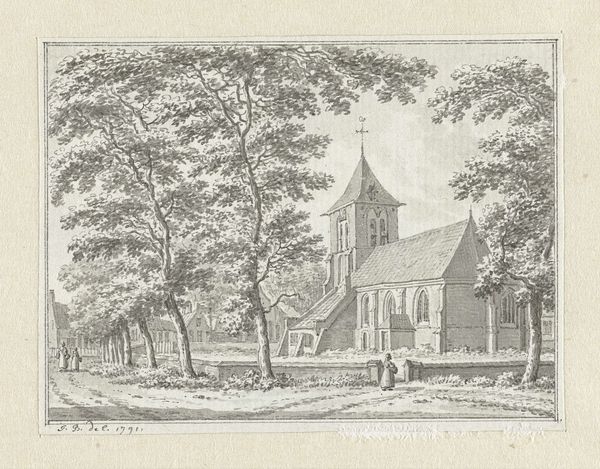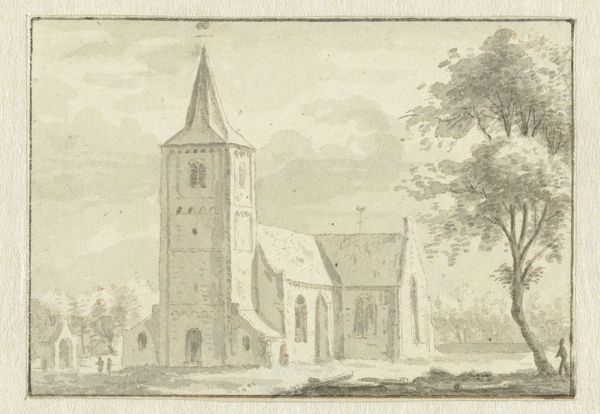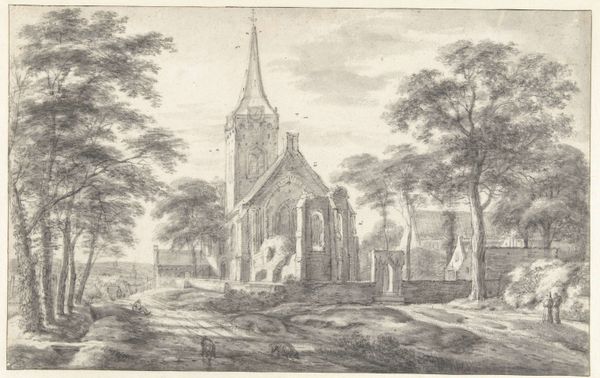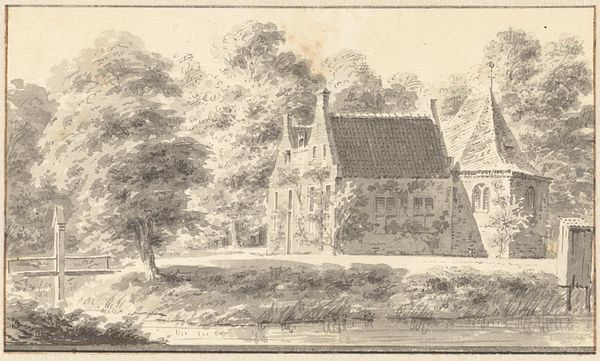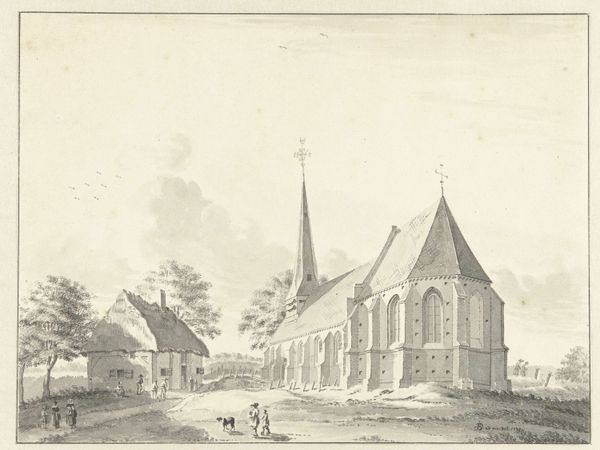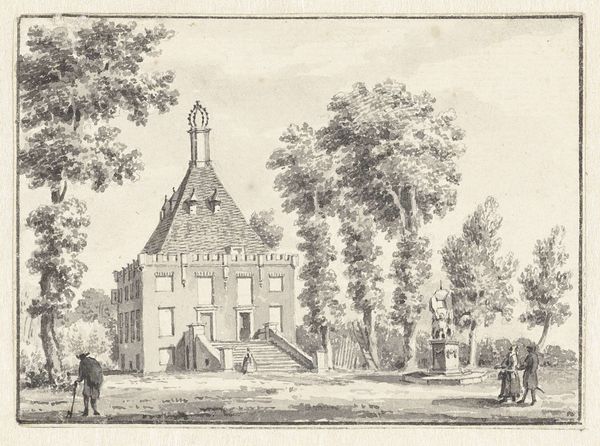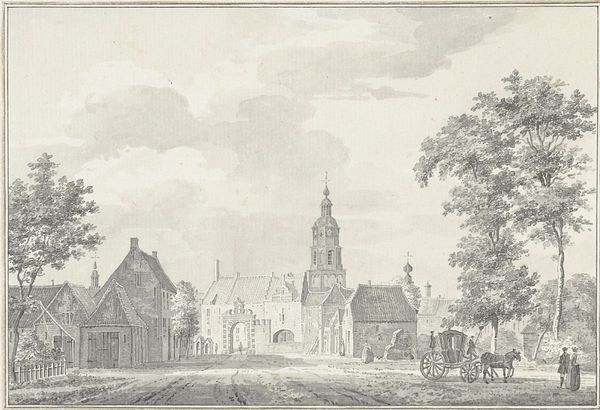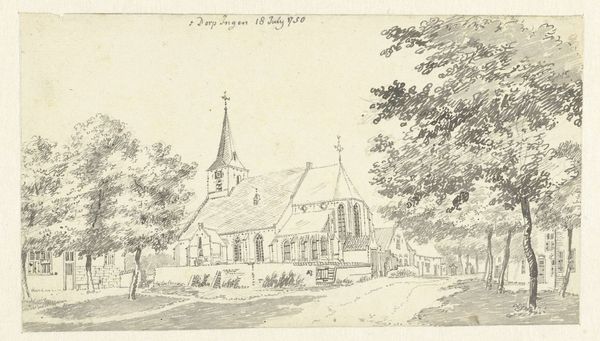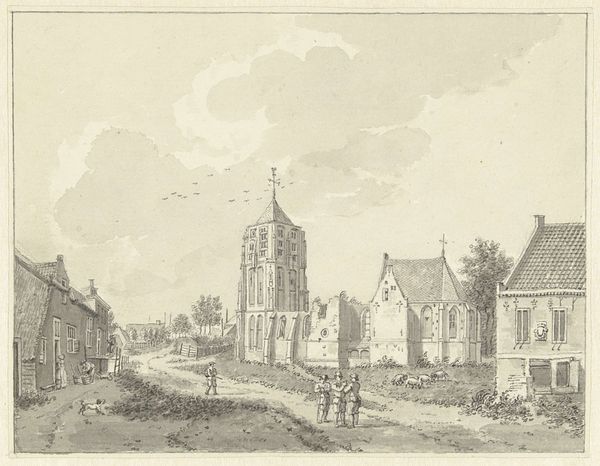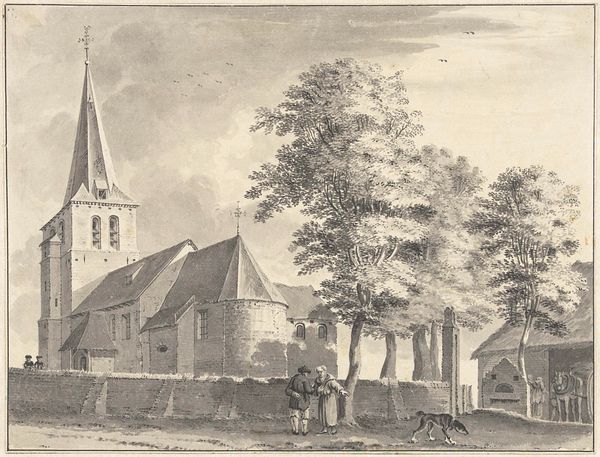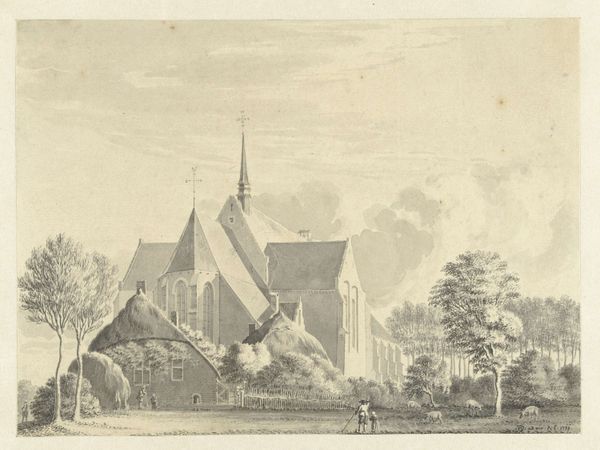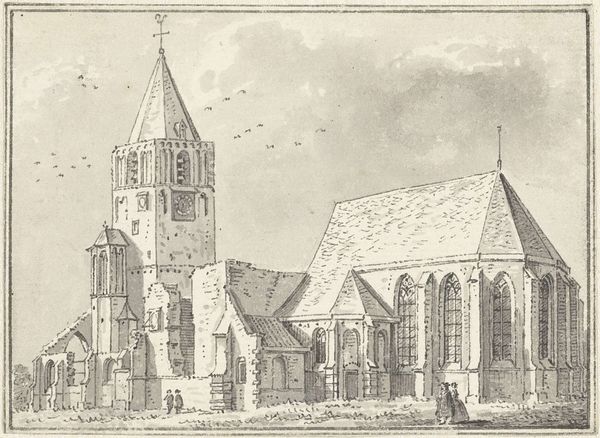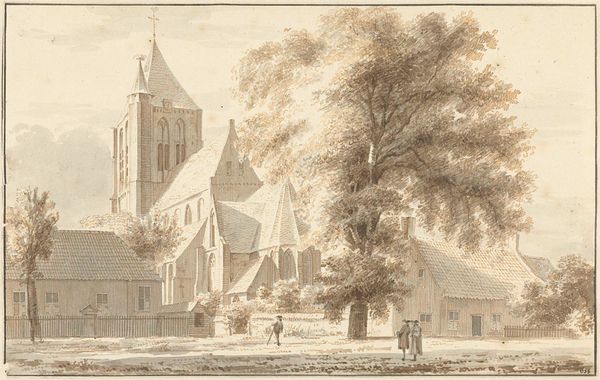
drawing, ink, pen, architecture
#
drawing
#
aged paper
#
quirky sketch
#
baroque
#
old engraving style
#
sketch book
#
landscape
#
personal sketchbook
#
ink
#
sketchwork
#
pen work
#
sketchbook drawing
#
pen
#
architecture
Dimensions: height 146 mm, width 222 mm
Copyright: Rijks Museum: Open Domain
Editor: This drawing, "Kerk van West-Souburg" by Cornelis Pronk, was made in 1746 using pen and ink. It has a really calming feel, despite depicting a rather old, crumbling church. I’m intrigued by the contrast between the detailed architecture and the looser rendering of the surrounding landscape. What do you see in this piece from a formalist perspective? Curator: The power of this drawing, for me, lies precisely in that tension you mentioned. Pronk masterfully juxtaposes linear precision, evident in the architectural rendering, with a more suggestive treatment of the natural elements. Note the stippling technique used for the foliage, compared to the crisp lines defining the church’s structure. Editor: Yes, that contrast really does bring out the details. How does the composition contribute to the artwork's overall effect? Curator: Observe how the artist positions the church slightly off-center, creating a dynamic asymmetry. The architectural mass anchors the composition, while the open space to the right and the staffage – those small figures and animals – introduce a sense of movement and spatial depth. Furthermore, the receding planes are skillfully articulated through subtle variations in line weight and density. Do you perceive how this intentional imbalance enhances visual interest, preventing the work from becoming static or predictable? Editor: Absolutely, the off-center placement prevents it from feeling too rigid. It's fascinating how much the technique itself impacts how we experience the scene. The lines give structure while also evoking a sense of delicate transience, a capture of this space in a moment. Curator: Precisely. The seemingly simple act of drawing, when executed with such technical command, transforms the ordinary into something profound. We appreciate not just *what* is depicted but *how* it is depicted. Editor: I'm glad you pointed out the subtleties in Pronk’s technique. Now I see how the composition enhances my reading of decay and persistence. Curator: Indeed. This approach allows for new possibilities for interpreting architecture and the art itself.
Comments
No comments
Be the first to comment and join the conversation on the ultimate creative platform.
